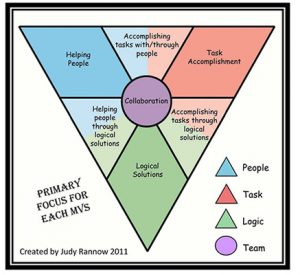 Development processes are based on several pillars. The model I suggest is often described as 70-20-10. It is believed that best results are obtained if 70% of learning takes place through personal experience, 20% through coaching and mentoring, and only 10% through traditional training. In this way, the efficiency of learning and development is maximized. Adding up to these numbers the amounts of money invested in the development of leaders, as well as the price of misdirected guidance and method of personal development of the people who lead the employees and business activities, we arrive at the following question: how to assess who should be developed and in which areas? The answer to this question may be found in the assessment and support tools.
Development processes are based on several pillars. The model I suggest is often described as 70-20-10. It is believed that best results are obtained if 70% of learning takes place through personal experience, 20% through coaching and mentoring, and only 10% through traditional training. In this way, the efficiency of learning and development is maximized. Adding up to these numbers the amounts of money invested in the development of leaders, as well as the price of misdirected guidance and method of personal development of the people who lead the employees and business activities, we arrive at the following question: how to assess who should be developed and in which areas? The answer to this question may be found in the assessment and support tools.
I use various tools in my work. Some of them are used for the initial assessment of motivation, emotional intelligence, the conduct in conflicts or simply the communication style. Others serve as support to clients to open up more easily, to make a deep appraisal of themselves and their needs and, most importantly – to change a perspective. What is common to all these tools is that I am certified by the relevant consulting institutions for applying and interpreting the tools I use.

 If you are a leader and you want to mobilise your team, the first thing you can do is to listen to them. Empathy is a crucial and critical skill for a leader, since by listening and understanding your people you can gain a better insight as to how to motivate them and what they find important. That is the first step in your capacity to influence people. Exerting the influence is the critical leadership skill. It has been proved that emotional intelligence (EI) is the key indicator of performance and development. Individuals with higher EI communicate efficiently, they form strong bonds and quality strategies for overcoming obstacles. EI can be measured in a much more convenient and less controversial way than IQ. And most importantly – unlike IQ, it can be significantly improved and developed.
If you are a leader and you want to mobilise your team, the first thing you can do is to listen to them. Empathy is a crucial and critical skill for a leader, since by listening and understanding your people you can gain a better insight as to how to motivate them and what they find important. That is the first step in your capacity to influence people. Exerting the influence is the critical leadership skill. It has been proved that emotional intelligence (EI) is the key indicator of performance and development. Individuals with higher EI communicate efficiently, they form strong bonds and quality strategies for overcoming obstacles. EI can be measured in a much more convenient and less controversial way than IQ. And most importantly – unlike IQ, it can be significantly improved and developed. The tool is based on Dr Elias H. Porter’s Relationship Awareness theory. It analyses, interprets and induces positive changes. It has been verified and applied in corporations around the globe since 1971. What distinguishes SDI from other assessment tools for the styles of behaviour is that it doesn’t focus on sheer explaining of behaviour-based personality types, it also addresses the motivation behind a behaviour style – not HOW we are doing something, but rather WHY – what is the purpose of what we are doing. This unique approach enables understanding of:
The tool is based on Dr Elias H. Porter’s Relationship Awareness theory. It analyses, interprets and induces positive changes. It has been verified and applied in corporations around the globe since 1971. What distinguishes SDI from other assessment tools for the styles of behaviour is that it doesn’t focus on sheer explaining of behaviour-based personality types, it also addresses the motivation behind a behaviour style – not HOW we are doing something, but rather WHY – what is the purpose of what we are doing. This unique approach enables understanding of: Points of You – Coaching game
Points of You – Coaching game